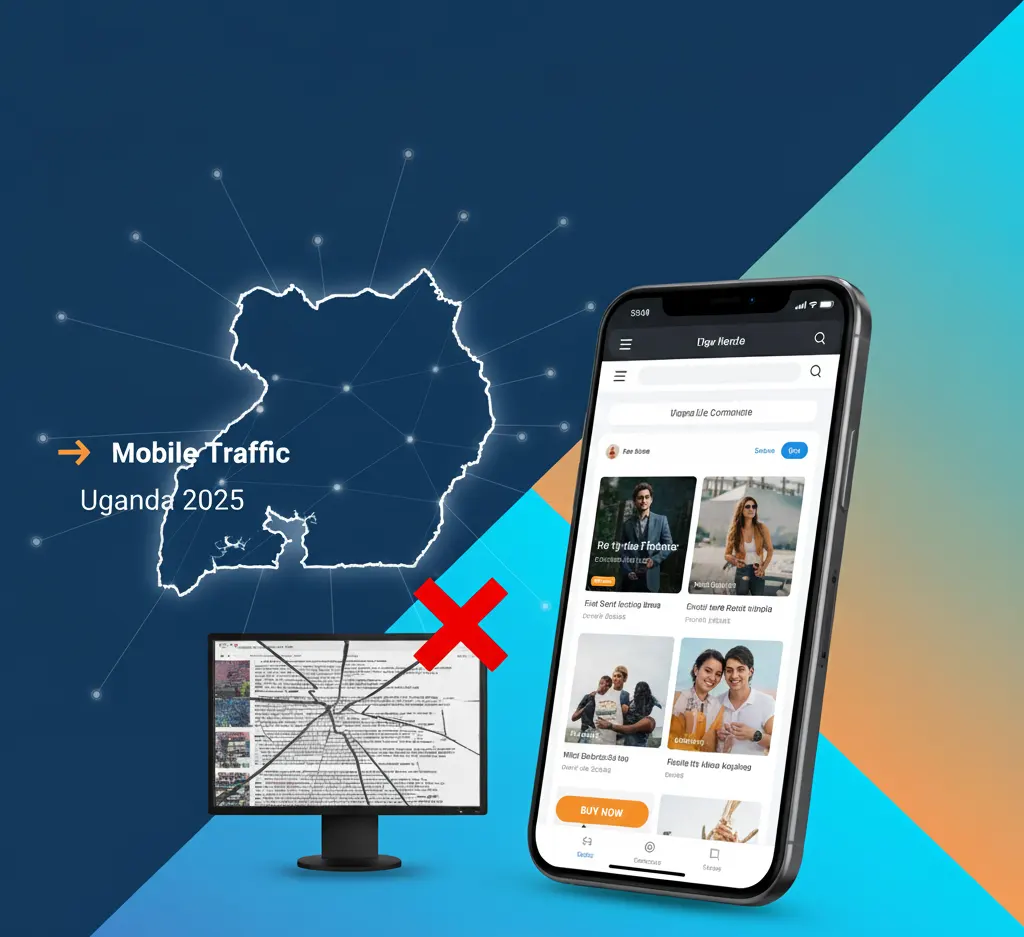
In Uganda’s rapidly evolving digital economy, the smartphone is the primary gateway to the internet. If your business website is still designed for a desktop computer, you are effectively closing your door to the majority of your potential customers. A mobile-friendly website is no longer a trend—it is a mandatory requirement for survival and growth.
Overwhelming Majority: Uganda’s Mobile-First Reality
The data is conclusive: the internet in Uganda is overwhelmingly accessed via mobile devices.
While connectivity rates are constantly climbing, a vast percentage of Ugandans who are online primarily rely on their phones. Reports indicate that over 70% of internet traffic flows through mobile networks in Uganda.
Key statistics supporting the need for a mobile website Uganda:
-
Massive Mobile Penetration: By early 2025, there were approximately 38.6 million active cellular mobile connections in Uganda. This massive base means your customer is almost always carrying their potential shopping device.
-
Access is Mobile: Unlike many developed nations, where fixed broadband is common, the cost and infrastructure limitations in Uganda mean the mobile connection (often 3G or 4G) is the primary or only way most people access your business online.
-
Search Engine Priority: Google uses mobile-first indexing. This means the mobile version of your website is the one Google uses for ranking. If your mobile site is slow or broken, your search ranking will suffer drastically, regardless of how good your desktop site looks.
The Direct Impact of Mobile-Friendliness on Sales
A poor mobile experience doesn’t just annoy visitors; it actively kills sales and conversions.
1. Bounce Rate and Credibility
If a visitor in Kampala clicks on your link and the page takes longer than 3 seconds to load, they will likely leave (or “bounce”). If they stay, but the text is tiny, images are distorted, or they have to pinch-to-zoom, they lose trust.
-
Impact: High bounce rates signal to Google that your site is poor quality, further dropping your ranking. Crucially, the customer sees your business as amateur or unreliable, taking their money to a competitor with a seamless mobile checkout.
2. Conversions and User Effort (Perceived Ease of Use)
The easier it is to buy or contact you, the more conversions you will get. In a study on e-commerce adoption, perceived ease of use was found to be a massive factor in sales growth variations.
-
Poor Mobile Experience: If a user has to zoom in to enter their phone number on a tiny form, or if the checkout button is hidden below the fold, they will abandon their cart or inquiry.
-
Mobile Money Integration: Since Mobile Money is the dominant financial transaction method in Uganda, a mobile site is essential for quick, tap-and-pay integrations. A slow or difficult mobile process cuts off the primary payment artery for millions of customers.
How to Optimise Your Website for Mobile Traffic
The solution is implementing Responsive Design and prioritizing speed. Here are the steps to make your site a sales-driving mobile website Uganda:
1. Adopt Responsive Design
This is the standard approach where your website’s layout automatically adjusts based on the screen size, whether it’s a small smartphone or a large tablet.
-
Action: If you use a Content Management System (CMS) like WordPress, ensure your theme is modern and officially responsive. If custom-built, ensure your developer uses a fluid grid system and scalable images.
2. Prioritize Mobile Speed Ruthlessly
Since many users are still on slower 2G/3G networks or have limited data bundles, every wasted kilobyte matters.
-
Optimise Images: Compress images mercilessly. Use modern formats like WebP which are much smaller than traditional JPEGs. Ensure images are only as large as they need to be (e.g., don’t upload a 4000px image if it only displays at 500px).
-
Minimise Code: Use tools to “minify” your HTML, CSS, and JavaScript—stripping out unnecessary spaces and comments that slow down loading.
-
Use Local Hosting: Consider local hosting solutions (like Raxio Data Centre) or leverage global CDN services (like Cloudflare) with local points of presence to significantly reduce server response time for users in Uganda.
3. Focus on Touch and Navigation
Mobile users navigate with their thumbs, not a precise mouse cursor.
-
Large, Tappable Buttons: All buttons, especially your Call-to-Action (CTA) buttons (e.g., “Buy Now,” “Call Us,” “Chat on WhatsApp”), must be large enough to be easily tapped without hitting another element.
-
Simplify Menus: Replace complex, multi-layered desktop menus with a clean, standard mobile “hamburger” menu.
-
Short Forms: Keep sign-up and checkout forms to the absolute minimum required fields.
Are you ready to stop losing sales to the mobile bounce?
Check your current website’s mobile performance using Google’s free PageSpeed Insights tool. If your mobile score is below 90, you have an urgent problem!
Click here to contact us today for a free mobile audit and a strategy to make your website an unstoppable sales engine for the Ugandan market.